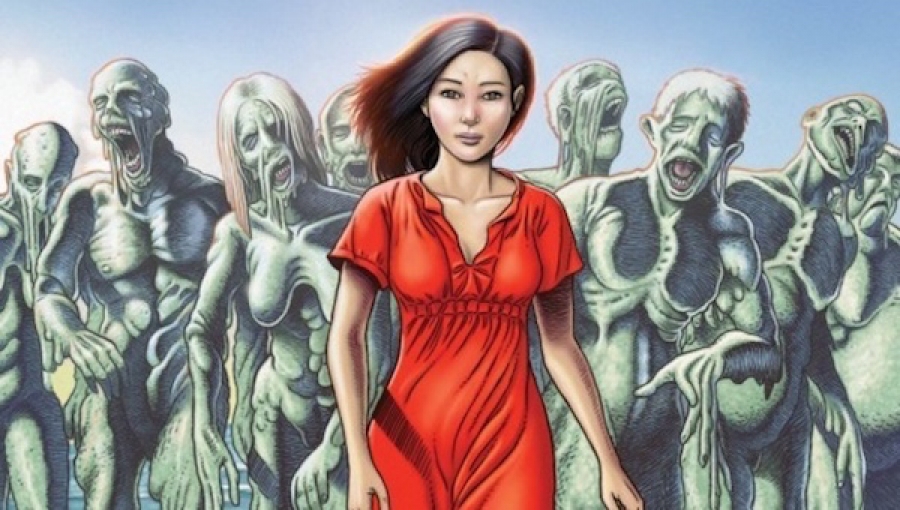What if the end of the world weren’t cast in somber tones . . . gritty greys and blacks, filled with dust and mud? What if it weren’t defined by the chaotic dismantling of social order? What if there were still beautiful sunsets, pristine beaches, flowers, butterflies, and chirping birds? What if it came with an orderly community center and a plan for sustaining agricultural viability?
In Jay Gunn’s Surface Tension, we do not encounter the kind of post-apocalyptic landscape with which we’ve become so familiar. Dropped onto the British Channel Island of Breith (We helpfully learn this in the first caption box.), we find a small society of survivors of the “Sea-Sickness.” These survivors have been maintaining their lives after 99% of the world’s population has mysteriously walked into the ocean. Naturally, this seems somewhat connected to the equally mysterious appearance of mammoth coral structures (origins unknown) throughout ocean, standing ominous guard over the remnants of humanity.
And then, two people inexplicably walk back out of the ocean . . . alive and strangely altered.
This 5-issue miniseries covers the events of the plague, with flashbacks to the initial discovery of the coral sentinels, the onset of the flesh-melting “Sea-Sickness,” and the Breith community’s efforts to figure out why two of their number have returned to them. We are introduced to strange, new animal species, both terrifying and beautiful. We get a sense of how the community is working to survive. We start to understand [MINOR SPOILER HERE] that the coral sentinels may exist to correct the catastrophic levels of environmental damage humans have wreaked on the Earth.
All of this is done in a wonderfully bright and cheerful color palette, like a vacation slide presentation. This is a refreshing change but did take some getting used to. The Breith community feels neat and orderly, everyone’s laundry up to date, gardens manicured, and more than just basic public services maintained. I think the story does a decent job of supporting this somewhat overly tidy environment, but I kept looking for the chaos behind the façade in spite of everything.
Gunn’s artwork is most successful in the depiction of the natural world, in species we’re familiar with and those new species that are fresh out of his imagination. I was also very impressed with his handling of the moments where humans interact with the coral sentinels. Gunn achieves a balance of beauty and horror in these scenes that plays very well in the story. On the weaker side, however, were a number of the action sequences, which generally felt compressed in their panels, the perspective between characters in the foreground and background somehow not quite right.
Using the ocean as a source of inspiration for an environmental apocalypse is fresh and inventive. I am very intrigued by the infinite possibilities for new species of unknown origin, monster and otherwise. They say 95% of the Earth’s oceans remain undiscovered . . . this first issue of Surface Tension explores just the tip of that iceberg, and we’re already awash in monsters and mystery. With such an infinite source of inspiration to draw from, James Gunn should have a long-running, rewarding series on his hands.

